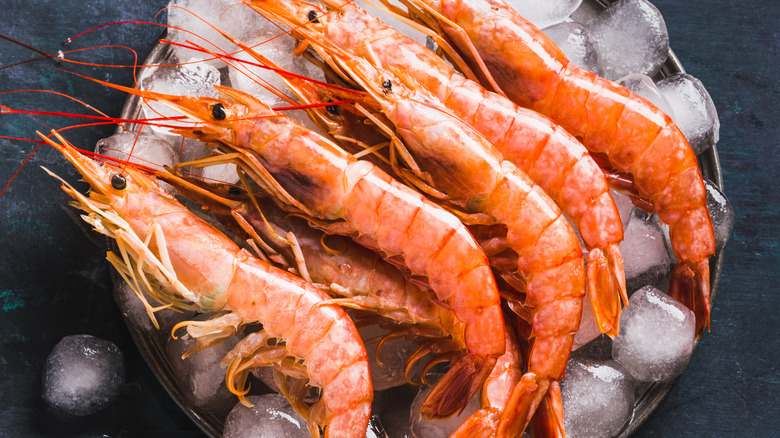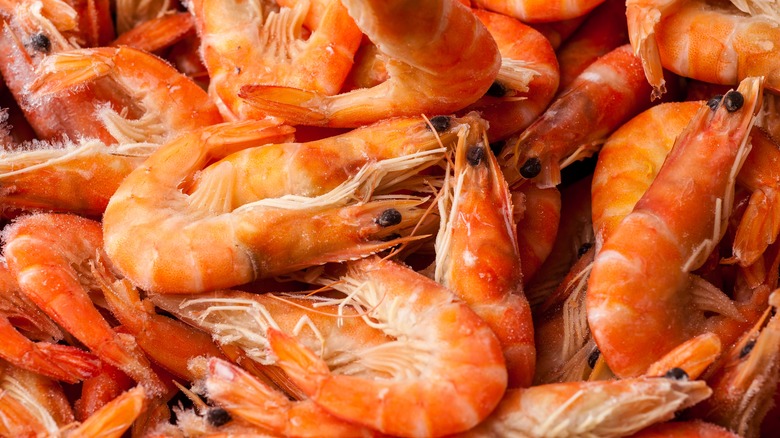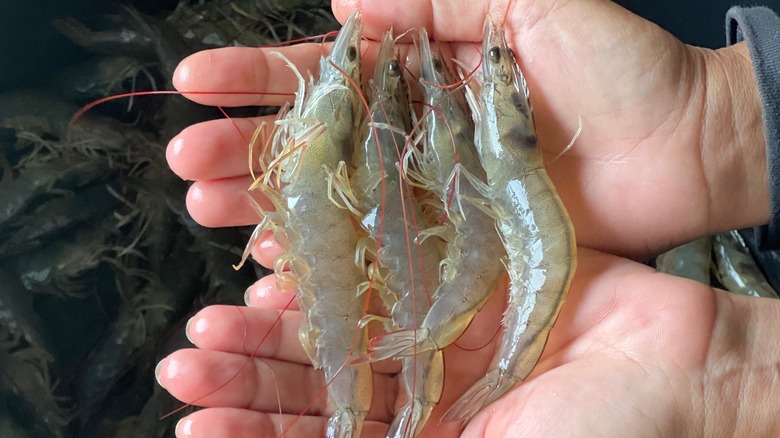What's The Difference Between Shrimp And Prawns?
If Bubba, Forrest Gump's brother in arms in the classic 1994 film, is to be believed, shrimp is one of the most versatile foods on the planet. Bubba tells us that, "There's pineapple shrimp, lemon shrimp, coconut shrimp, pepper shrimp, shrimp soup, shrimp stew, shrimp salad, shrimp and potatoes, shrimp burger, shrimp sandwich. That- that's about it," (via IMDB).
Bubba was far from alone in his undying affection for seafood. According to Scientific American, humans have been eating aquatic animals for around 164,000 years. However, when modern humans decide to snack on shrimp, they can find themselves confronted with a confusing yet important distinction. When you're crafting a butter and lemon sauce for shrimp scampi, you may find yourself wondering whether you should be complementing your pasta with shrimp or prawns. The two crustaceans are related, but there are several distinctions between them –- in actuality, they aren't even the same species.
The scientific distinctions between shrimp and prawns
According to USA Today, though the two animals are both classified under the taxonomic order Decapoda, they belong to separate suborders -– shrimp are Pleocyemata, and prawns are Dendrobranchiata. Both, however, have exoskeletons and ten legs — the name decapod is a reference to said legs.
Those of us who eat shellfish might recognize these ten little legs from the intensive peeling process behind preparing these two aquatic critters. Healthline tells us that shrimp have only one pair of clawed legs while prawns sport claws on three pairs. Additionally, though both decapods have three-segmented bodies, the prawns' segments overlap with one another, which gives it a more straight and inflexible form than shrimp.
The two crustaceans also have different reproduction habits, per Healthline. Shrimps carry their clutch of eggs on their underbelly while prawns simply lay their eggs into open water, leaving their offspring to develop independently — though the prawns often attempt to find rocks or plants on which they can securely deposit their eggs.
These decapod's flavor is linked to their habitat
Healthline explains that prawns are larger than shrimp. The top five biggest species within either group are all prawns.
Healthline explains that a major difference between shrimp and prawns has to do with their respective habitats. Shrimp are incredibly widespread. They thrive in water of all temperatures and types though only about a fifth of shrimp live in freshwater. Prawns, on the other hand, are primarily a freshwater species.
The different habitats of shrimp and prawns are responsible for their disparate flavors, according to USA Today. As the majority of shrimp spend their lives swimming around in salty seas, they have a noticeably brinier, more savory taste profile. Prawns, on the other hand, don't pick up extra seasoning from saltwater and are sweeter than shrimp.
Though there is a slight difference in the two decapods' flavors, they can often be used interchangeably when cooking (via Healthline). Regardless of whether you toss shrimp or prawns in your next seafood boil, you'll be making a healthy choice, as both critters contain 18 grams of protein per 85-gram serving.


